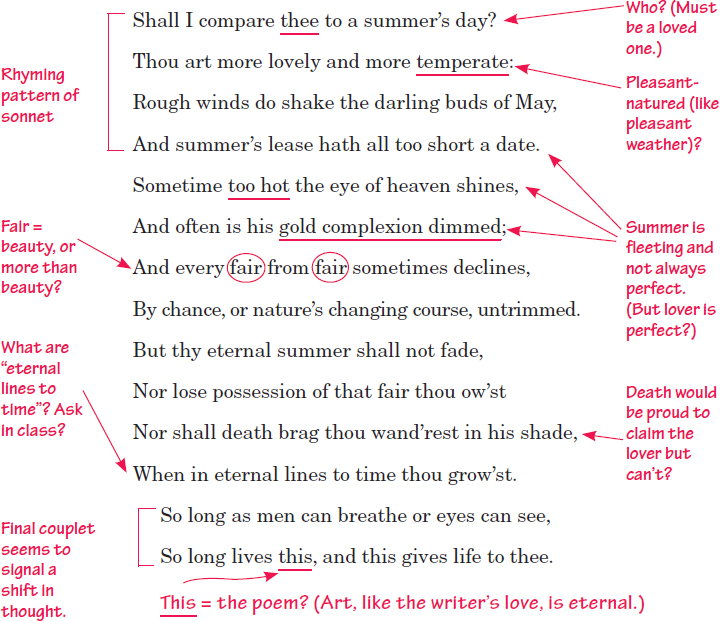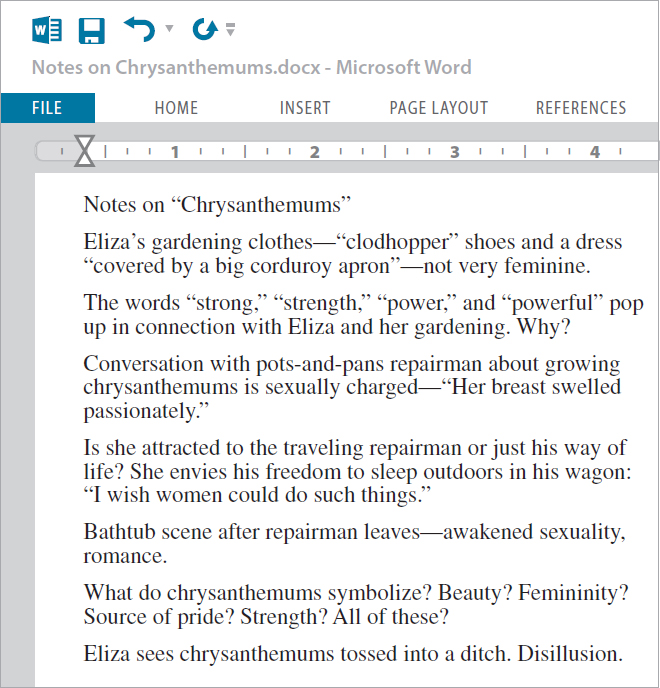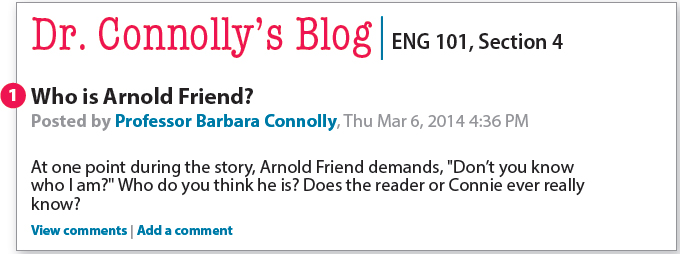L1-a: Reading actively
Responding to literature starts with becoming an engaged and active reader. Read the work through once, closely and carefully. Think of it as speaking to you: What is it telling you? Asking you? Trying to make you feel? Then go back and read it a second time. If the work provides an introduction and footnotes, read them as well. They may provide key information. Use the dictionary to look up unfamiliar words or words with connotations that may influence the work’s meaning.
Rereading is a central part of the process of developing an analysis. You should read short works several times, first to get an overall impression and then again to focus on meaningful details. With longer works, such as novels or plays, read the most important chapters or scenes more than once while keeping in mind the work as a whole.
As you read and reread, interact with the work by posing questions and looking for possible answers. The chart in L1-b suggests some questions about literature that may help you become a more engaged, active reader.
Annotating the work
Annotating the work—in other words, interacting with the text by taking notes—is a way to focus your reading, capture your responses, and prepare for a class discussion. The first time you read the work through, you may want to indicate passages you find especially significant or puzzling—with a pencil or highlighter or by taking notes electronically. On a more careful rereading, pay particular attention to those passages, and jot down your ideas and reactions in a notebook or (if you own the text) on the pages. As you annotate, you can try out ideas and develop your questions and perspectives about the work.
Here is one student’s annotation of a poem by Shakespeare.

NOTE TAKING ON A LITERARY WORK

Taking notes
Note taking is also an important part of rereading a work of literature. In your notes you can try out ideas and develop your perspective on the work. Above are some notes one student took on a short story, “Chrysanthemums,” by John Steinbeck. Notice that some of these notes pose questions for further thought.
Discussing the work
Understanding literature class discussions can be a social experience, and can often lead to interesting insights about a literary work. perhaps by calling attention to details that you failed to notice on a first reading. Discussions don’t always need to occur face-to-face. In many classes, they happen online in discussion forums, chat rooms, blogs, or wikis. Below, for example, is a set of blog postings about a character in Joyce Carol Oates’s short story “Where Are You Going, Where Have You Been?”
CONVERSATION ABOUT A SUBJECT


1 Instructor’s prompt.
2 A series of student responses to the prompt.